Cone Rubber Fender with Ceritificate
1.Primary business:
mainly deal with:
Cone fenders,
Super cell fenders (SC type), Â
Super Arch fenders (type SA),
Cylindrecal fenders (Type Y),
Semi-circular fenders (Type D),
Type GD fenders,
Type I fenders,
Type U fenders,
Turn cell fenders,
Type π rubber fenders,
Rubber ladder,
Rubber fenders for tug boats,
penumatic rubber fenders, airbags, PVC yacht fenders etc.
We have 15 years experience in rubber fender production and our customers include: NEW YORK port, KOBE port, YOKOHAMA port, Singapore port, ANTWERP port, LONDON port, HAMBURG port, DUBAI port, QINGDAO port, SHANGHAI port etc.
Certificate:Â ABS, LR, BV, NK, DNV, RINA, RS, IRS,CCS etc.
2.Product description:
Cone fenders
High energy absorption and low reaction force.
Easy and fast for installation.
For selecting a fendering system uitable.
Cone fenders are an improved version of Cell type Fender recently introduced and recommended for all types of applications including high tidal variation sites. This advanced feature of lesser height of fenders improves material handling capabilities of Deck / Vessel Cranes which reduces overall cost of the project. Due to the geometrical shape of the fenders it can deflect more and it can absorb more energy from any direction. Maintaining reaction force, but doubling energy absorption, can be achieved by using two identical cone fenders in a back-to-back arrangement. In order to distribute the reaction force, cone fenders are typically supplied with large fender panels, which keeps the hull pressure low.
3. Specification, measures
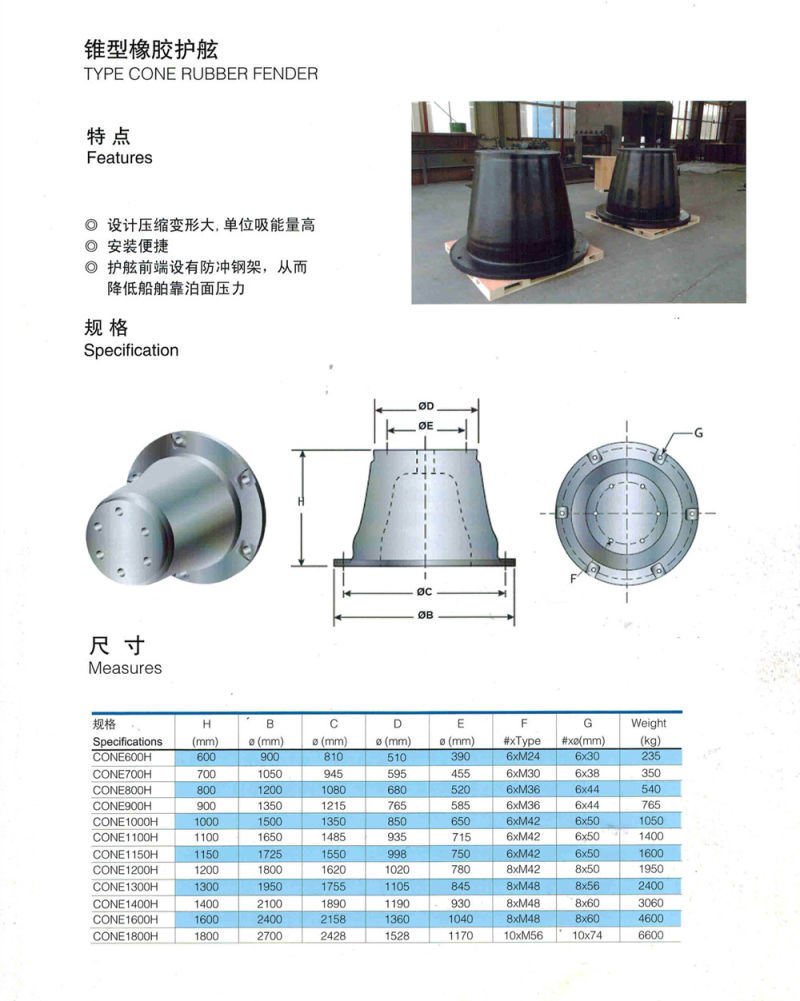
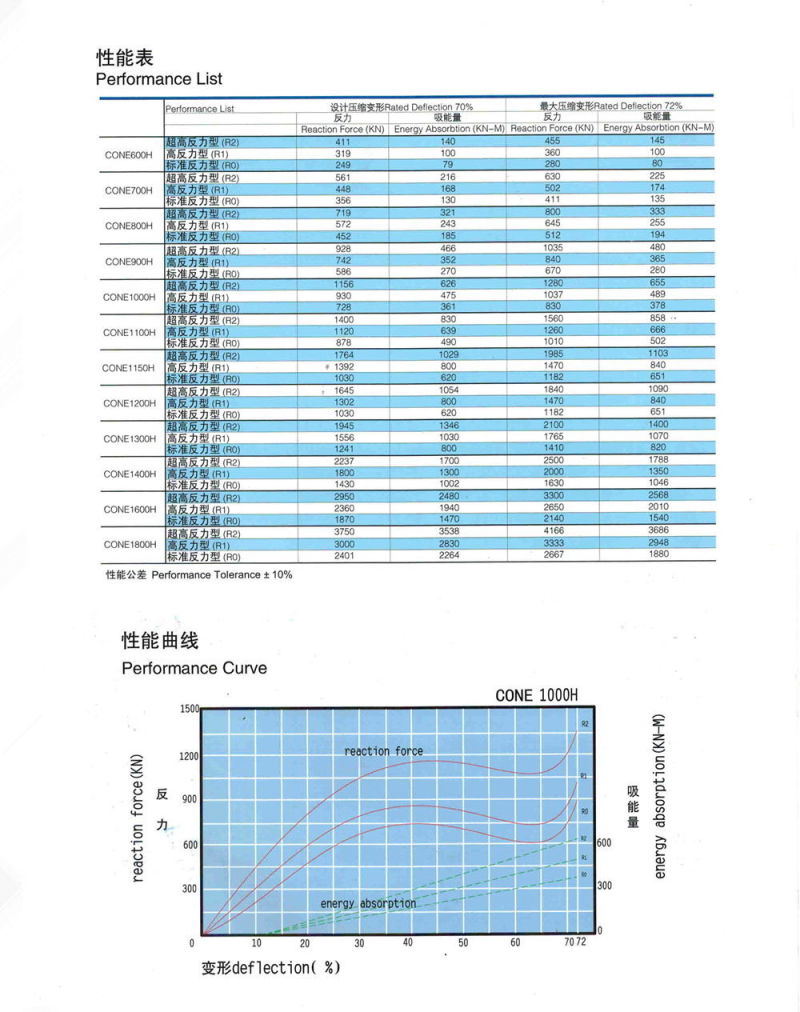
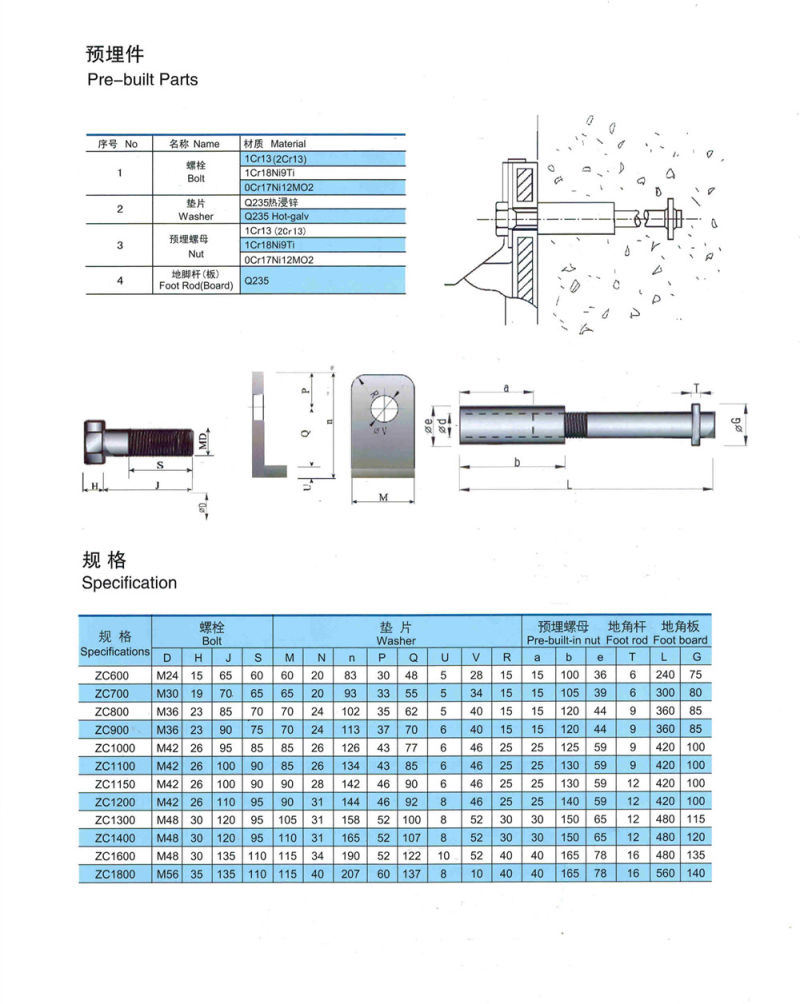
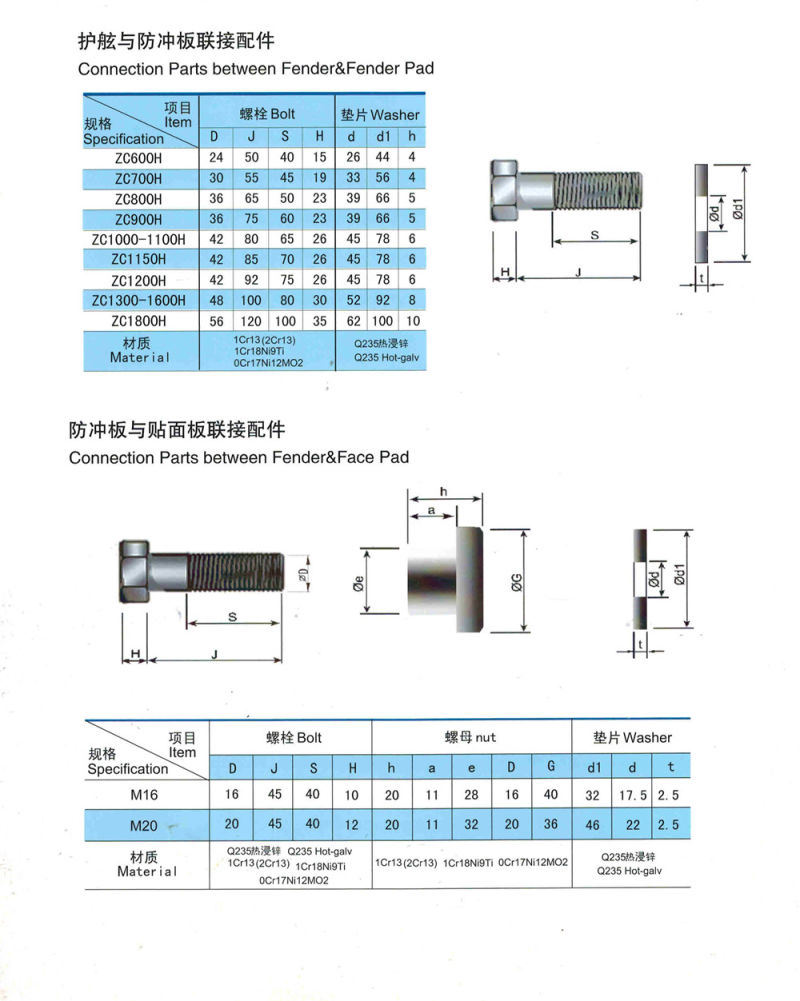
5.Photos for reference:
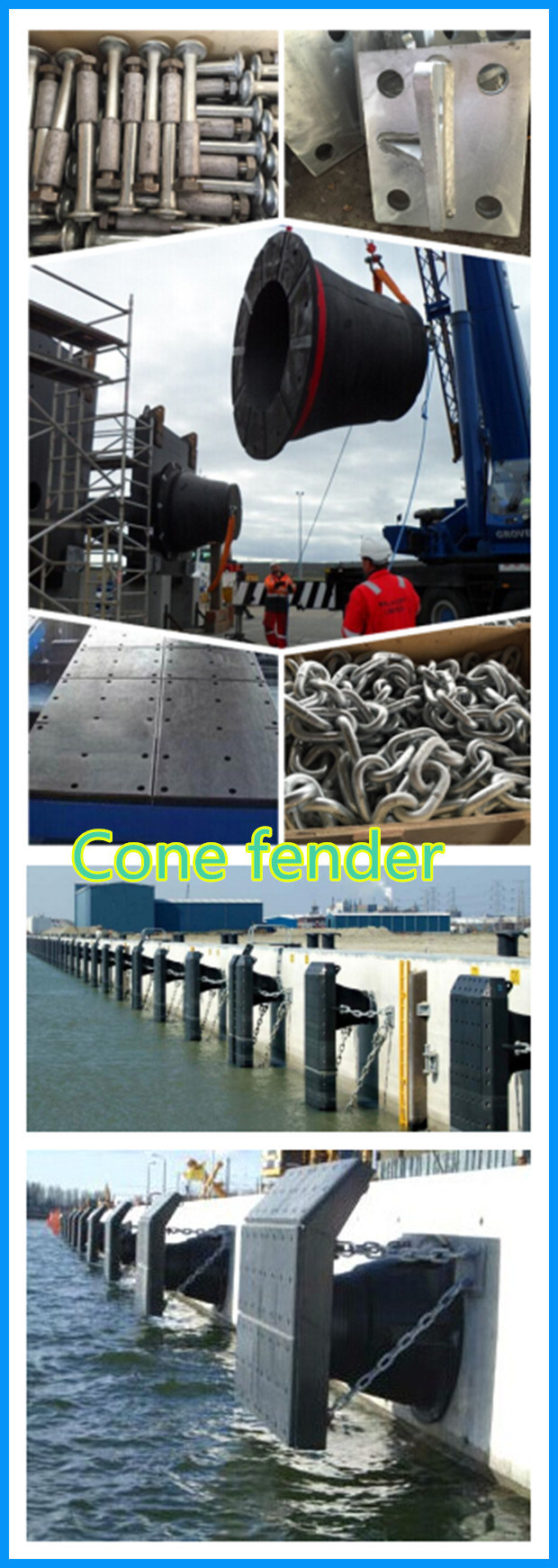
Â
Pulse Solenoid Valve
The pulse signal is input into the coil of the solenoid valve through the wire, and the pulse valve is controlled by the output signal of the pulse injection control instrument. The pressure change of the two gas chambers of the front and back of the valve can make the deformation of the rubber diaphragm open and close the pulse valve. The diameter of the rubber diaphragm determines the size of the rubber diaphragm and the speed of opening and closing. The larger the diameter of the diaphragm, the larger the stroke and the better the injection performance.
Definition:
The pulse solenoid valve is also called the diaphragm valve. It is the "switch" of the compressed air in the dust cleaning and blowing system of the pulse bag type Dust Collector. It is controlled by the output signal of the pulse injection control instrument, and blows the dust in the filter bag (room), so that the resistance of the dust collector is kept within the set range, so as to ensure the handling capacity and the dust collecting efficiency of the dust collector.
Working principle:
The coil of the solenoid valve is input into the forward pulse signal through the wire, and the working flux generated by the coil causes the moving core to pull in and open the valve. When the forward pulse signal is stopped, the moving core is released, the moving core is returned to the initial state under the effect of spring force, and the valve is also kept in the form of self holding, and it can be kept after the forward pulse or power break, and the negative pulse signal is needed to reset. The principle of the pulse solenoid valve is to use the pulse of the electrical apparatus. The impulse is transformed into a mechanical pulsation, which makes the strong energy of the pulsating gas become momentum, and produces a huge force in a short time. The interval of the pulse is controlled by PLC to be determined according to the recovery time of the rated gas pressure, L.
Use:
Usually installed in the main oil road or the shock absorber back pressure oil road, the oil pressure drops when the transmission is automatically raised and lowered, or when the lock stop and the lock stop are started, in order to reduce the shift and lock the unlocking impact and make the vehicle run more balanced.
Its function is to control the oil pressure in the oil road.
Effect:
It is to control the size of oil pressure in the oil road. It is usually installed in the main oil road or the back pressure oil road of the shock absorber to reduce the oil pressure shock when the shift and lock are unlocked, so that the operation of the equipment is kept stable.
According to the angle of valve inlet and outlet and the form of air inlet, it can be divided into three types.
1. right angle electromagnetic pulse valve: the diaphragm valve is directly controlled by electrical signals at the right angle of the inlet and outlet of the valve body.
2. straight through electromagnetic pulse valve: diaphragm valve is directly controlled by electrical signals at 180 degrees of inlet and outlet of valve body.
3. Submerged Electromagnetic Pulse Valve: diaphragm valve which is directly submerged by the valve inlet and is directly controlled by electrical signals.
Pulse Solenoid Valve
Pulse Solenoid Valve,Submerged Electromagnetic Pulse Valve,2 Inch Pulse Solenoid Valve,Rectangular Pulse Solenoid Valve
Botou Youjian Environmental Protection Equipment Co. LTD. , http://www.btdustmachine.com